Protecting & Preserving Coral Reefs
Protecting & Preserving Coral Reefs
Surprising Facts About Coral
Coral may be the most important, yet misunderstood, component of the world’s oceans. Without it, the Virgin Islands would be vastly different and far less beautiful. While many describe coral as “plant” or “mineral,” the hard, stony substance is actually classified as “animal.” Yes, you read that correctly!
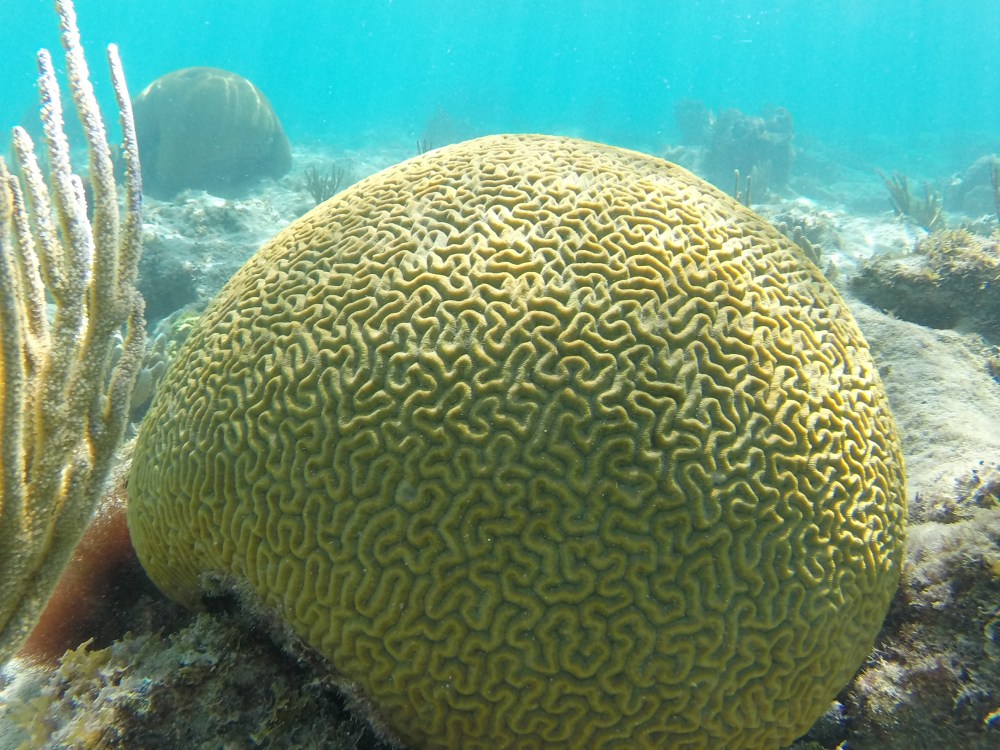
Brain Coral
Formed from masses of shells from very small sea animals, coral is an animal with plant-like cells living inside it. Each coral polyp has a mouth and stomach which divides to form colonies that act as the basis for coral reefs. While some corals are composed of hard calcium skeletons and others have branchlike features, all reef-building corals are considered cousins of animals such as jellyfish and sea anemones and classified as “Cnidarians.” Like their jellyfish cousins, corals use stinging cells to help them catch and eat plankton as well as fish.

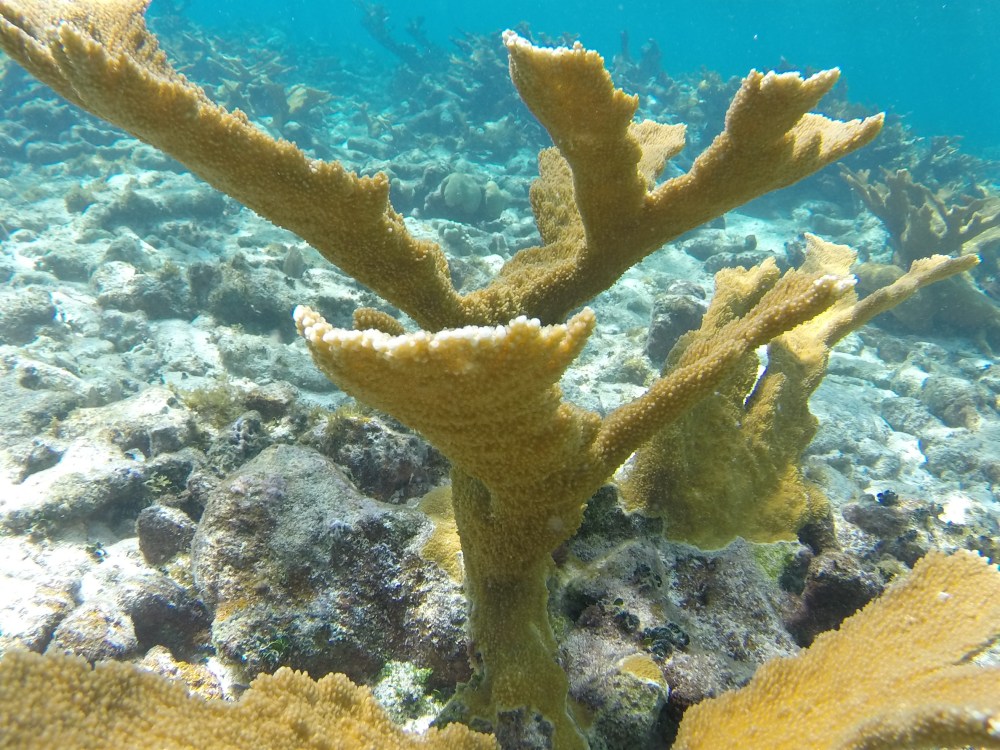
Elk Horn Coral
Below the surface of the Caribbean Sea lie some of the world’s most beautiful coral reefs and all are in danger because of climate change and pollution. When temperatures become too warm, “coral bleaching” occurs, causing coral to expel their algae which leaves them bone-white and vulnerable to starvation and disease.
Do you know that corals support 25% of ocean life?
Sometimes referred to as “underwater forests” because of the vast nooks and crannies that exist in their structures, coral reefs provide the landscape or habitat for a very diverse community of ocean life, including everything from eels and octopi to schools of fish.
Coral is also responsible for those sugar-white beaches that are so alluring. Parrotfish bite and scrape algae off of rocks and dead coral with their sharp beaks, then grind the calcium-carbonate coral reef material and digest it, eventually excreting it as sand. Yes, those famous Virgin Island white beaches are composed of parrotfish poop! (An adult parrotfish can excrete over a ton of sand per year!!!)
Hundreds of coral species exist – all in various colors, shapes and sizes. Some are even fluorescent in appearance. Brain corals look like human brains, while mound and boulder corals resemble giant rocks. Purple fan coral is abundant in Caribbean waters, though unfortunately, it is easily damaged in storms and strong currents.
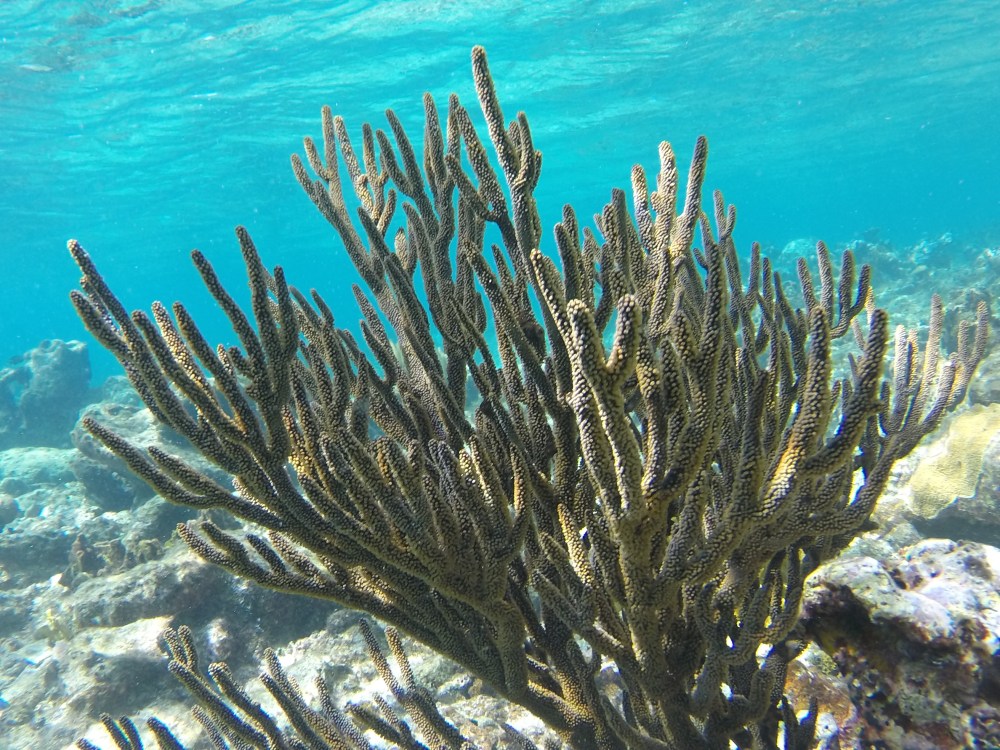
Staghorn Coral

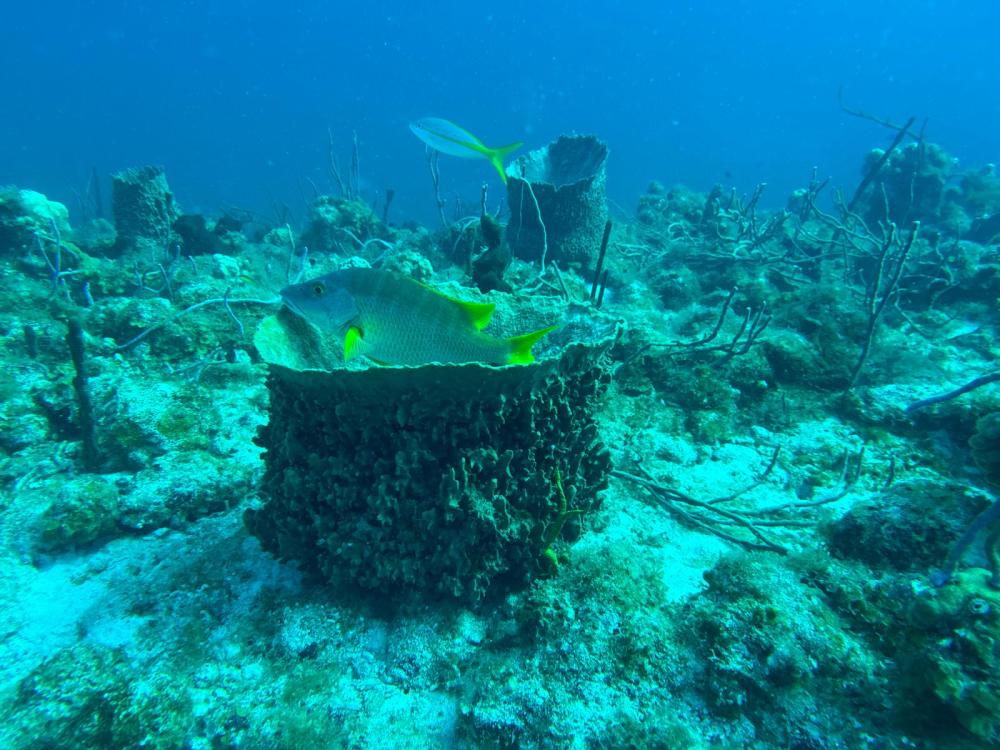
Chimney Coral
Another surprising fact about coral is that it can move. While adult corals are attached to the ocean floor, corals in the larval or baby stage can swim or ride ocean currents until they find the perfect place to attach themselves to the bottom of the seabed, thereby establishing new colonies. On September 7th, Texas Caribbean Charters, (Freeport, TX) captured some amazing footage of the coral in their area spawning. This spawning occurs when the moon and water temperatures synchronize perfectly and the adult coral releases their “gametes” into the ocean currents where they rise to the ocean surface and fertilize into the coral larva.
Protecting coral is of utmost importance, which is why coral restoration projects are underway at numerous locations in the Virgin Islands.
“Reef Response” – Meeting the Challenge
Reef Response is a coral restoration program located in the Virgin Islands. Because coral reefs are vital to local fisheries, necessary for storm protection and critical to supporting tourism recreations such as diving and snorkeling, Reef Response was created to address ways of increasing coral populations while also empowering local communities to assist in mitigating the effects of changing environmental conditions.
Using both land-based and in-water nurseries, the organization grows new coral by using pieces of broken coral that otherwise would die if left on the ocean floor. Their efforts to increase the number of coral colonies in the Virgin Islands is aptly named, Fragments of Opportunity.
The process of growing coral involves various facets, including:
- Nursery Maintenance – Using structures that act as support walls to hold the growing coral. To keep the coral healthy, structures must be routinely cleaned so that there isn’t an overgrowth of algae, sponges or other organisms, and sick coral needs to be removed.
- Nursery Monitoring – Monitoring growth and mortality issues, thereby creating standards to improve success rates.
- Outplanting – Once corals reach an appropriate size, they are “out-planted” onto coral reefs in need of restoration. Scuba divers handle the transplanting by using cement or underwater epoxy.
- Outplanted Coral Monitoring – Once planted, the new coral is monitored to assess if the transplant was successful.
- Community Outreach – Using presentations, public events, social media, and a citizen science program, Reef Response works to expand community awareness about the importance of healthy coral reefs. ***(Using Reef-safe sunscreen is a great first step to improving water quality. See our blog about this important topic.)
Three Places To See Coral Restoration In Progress
- Lovango Cay – We can take our guests to the waters directly off of the beaches to get a first-hand look at “out-plantings” of fast-growing species of coral such as Elkhorn and Staghorn. Choose this option on any of our Private Charters, or snorkel at Lovango Cay on our USVI ISland Hop & Food Boat tour. This exciting coral restoration project is being conducted in cooperation with the University of the Virgin Islands and includes some unique features. The supporting structures have been positioned so that when the coral grows, it will spell out “LOVANGO.” To help you find your way to this underwater project, signage has been established to guide and educate visitors within each of the research sites.
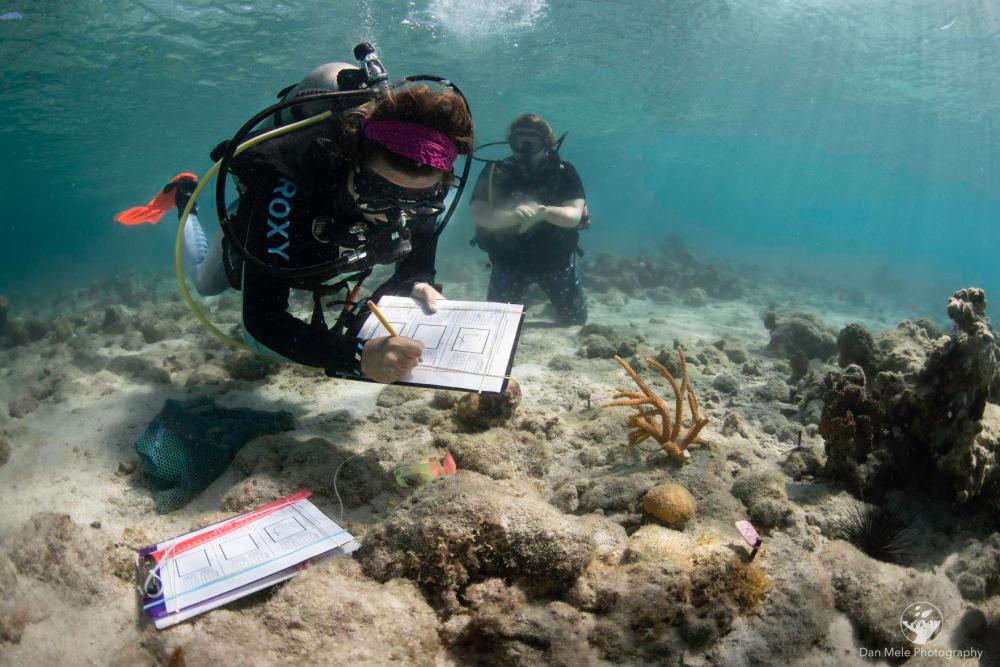
Personnel and graduate student interns from the University of the Virgin Islands’ V.I. Reef Response program collect data on outplanted corals that are part of a research project at Lovango Cay.
Photo by DAN MELE
- Coral World Ocean Park – Located on the East End of St. Thomas next to Coki Beach, Coral World Ocean Park is dedicated to coral reef education, research and conservation. Guests can learn about the importance of ocean ecosystems while also interacting firsthand with reef fish and invertebrates that inhabit coral reefs. Part of the park’s mission is to run a land-based nursery that is currently growing fragments of Massive lobed star corals, Mountain star corals and Boulder star corals, as well as an ocean-based nursery to produce Staghorn coral. In a few years when the coral is ready, the park will transplant coral to various reefs surrounding St. Thomas.
- The Nature Conservancy’s Coral Innovation Lab on St. Croix – Located at Estate Little Princess, a historic plantation northwest of Christiansted, the lab will serve as a center to explore innovative approaches to coral conservation. As new practices and technology is discovered, it will be distributed globally to advance coral conservation worldwide. The Nature Conservancy, in cooperation with NOAA and the National Fish and Wildlife Foundation, is also undertaking one of the largest coral-restoration initiatives that spans 150 acres of reef area in St. Croix’s East End Marine Park.
Dire Predictions vs Hope for the Future
Coral reefs are some of the richest ecosystems on Earth and their preservation is critical to people and communities around the world that depend upon ocean-based food and livelihoods. In the last three decades alone, more than half of the world’s corals have disappeared. Without efforts to restore these important ecosystems, 90% of coral reefs could be gone within our lifetime.



The Caribbean, alone, is home to 10% of the world’s coral reefs and more than 12,000 marine species. It’s estimated that in the past three decades, living coral in this part of the world has decreased by a frightening 60%. Without intervention, the ocean landscape in the Virgin Islands could dramatically change in devastating ways.
To preserve these vital reefs, it’s important to get involved.
#1. Educate yourself about how you can help. Even simple steps like using reef-safe sunscreen, not stepping on rocks or coral while snorkeling and disposing of trash properly are a good start. Visit: https://www.epa.gov/coral-reefs/what-you-can-do-help-protect-coral-reefs
#2. Support organizations and agencies like those listed here that are involved with coral restoration. Visit: tuckermanreef.com
End Notes: If you found this blog informative, please share it with your friends. Then visit our website and book a boat day with Stormy Pirates Charters – we’ll put the gang plate down and escort you in style. And, we’re happy to assist you in seeing some of this important coral restoration work that’s already in progress.
